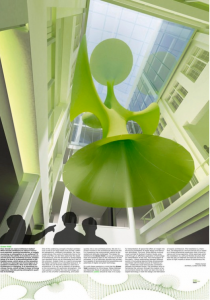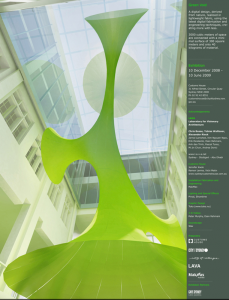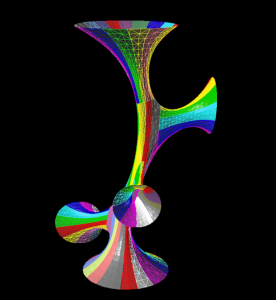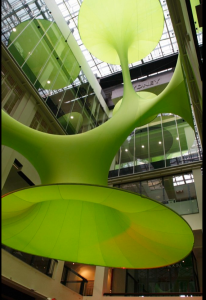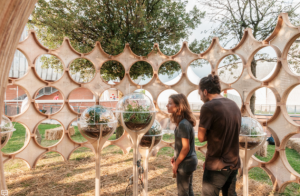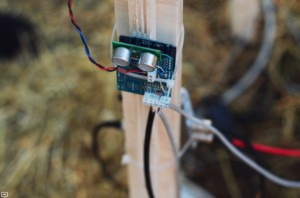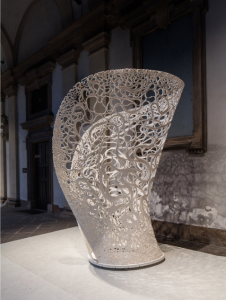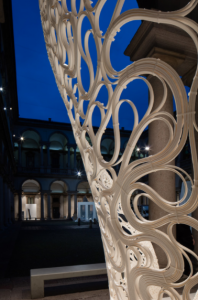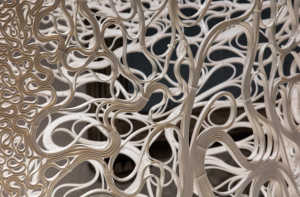//Min Young Jeong
//15-104 Section A
//mjeong1@andrew.cmu.edu
//Project-07
function setup() {
createCanvas(480, 480);
}
function draw() {
var r = mouseX * 0.25;//creating r,g,b values to color strokes based on position of mouse on canvas
var g = mouseY;
var b = 255;
noFill();
background(0);
push();
stroke(r, g, b);
strokeWeight(0.5);
translate(width/2,height/2);
drawmodifiedhypotrochoid();
pop();
//first geomety, modified hypotrochoid(middle one)
push();
stroke(g,r,b);
strokeWeight(0.5);
translate(width/2-100,height/2);
drawmodifiedhypotrochoid2(300,300);
pop();
//secon geometry,modified hypotrochoid(left one)
push();
stroke(b,g,r);
strokeWeight(0.5);
translate(width/2+100,height/2);
drawmodifiedhypotrochoid3(300,300);
pop();
//thrid geometry, modified hypotrochoid(right one)
}
function drawmodifiedhypotrochoid() {
var x;
var y;
var x1 = map(mouseX, 0, width, 0, 100);
var y2 = map(mouseY, 0, height, 0, 150);
beginShape();
for(var i = 0; i <50; i ++) {
var angle = map(i, 0, 50, 0, 360);
x = (x1 - y2) * cos(angle) - y2 * cos(((x1 - y2)) * angle);
y = (x1 + y2) * sin(angle) - y2 * sin(((x1 - y2)) * angle);
vertex(x, y);
endShape();
}
}
//first modified hypotrochoid that represents nose of the face
function drawmodifiedhypotrochoid2() {
var x;
var y;
var x1 = map(mouseX, 0, width, 0, 100);
var y2 = map(mouseY, 0, height, 0, 150);
beginShape();
for(var i = 0; i <100; i ++) {
var angle = map(i, 0, 50, 0, 360);
x = (x1 - y2) * cos(angle) - y2 * cos(((x1 - y2)) * angle);
y = (x1 - y2) * sin(angle) - y2 * sin(((x1 - y2)) * angle);
vertex(x, y);
endShape();
}
}
//second geometry that represents left eye of the face
function drawmodifiedhypotrochoid3() {
var x;
var y;
var x1 = map(mouseX, 0, width, 0, 100);
var y2 = map(mouseY, 0, height, 0, 150);
beginShape();
for(var i = 0; i <200; i ++) {
var angle = map(i, 0, 50, 0, 360);
x = (x1 - y2) * cos(angle) - y2 * cos(((x1 - y2)) * angle);
y = (x1 - y2) * sin(angle) - y2 * sin(((x1 - y2)) * angle);
vertex(x, y);
endShape();
}
}
//third geometry that represents right eye of the face
//http://mathworld.wolfram.com/Hypotrochoid.htmlFor this assignment, I initially started with a hypotrochoid with varying color based on position of mouse. And I moved on to three modifications of the hypotrochoid to see how the geometry can be different based on different input values. I played with changing y values which created elongated geometry and also with varying number x values in order to change the number of strokes.


![[OLD FALL 2017] 15-104 • Introduction to Computing for Creative Practice](../../../../wp-content/uploads/2020/08/stop-banner.png)




 Exhibition in Kettle’s Yard gallery in Cambridge by John Cage
Exhibition in Kettle’s Yard gallery in Cambridge by John Cage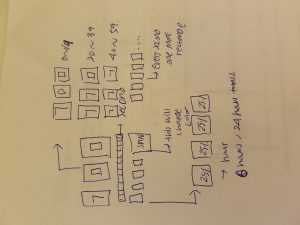
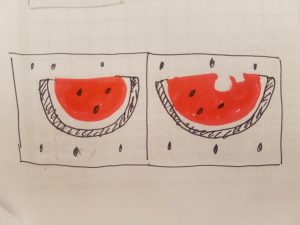
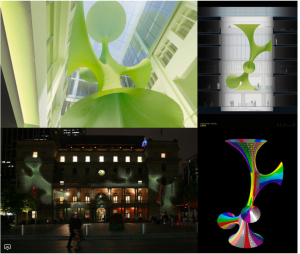 “Green Void” by Architect LAVA in Sydney,Austrailia
“Green Void” by Architect LAVA in Sydney,Austrailia